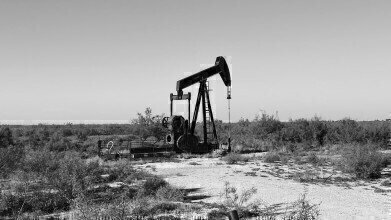Fuel for Thought
Who Is James Young? Looking Back at the History of the Petroleum Industry
Feb 10 2015
While today’s petroleum industry is ruled by magnates such as Shell’s Ben van Beurden, BP’s Robert Warren "Bob" Dudley and Mobil’s Rex W. Tillerson, it does owe its colossal success to some seriously influencial historical figures. Previously we took a closer look at Howard Hughes and his impact on the oil industry. Today, we will be looking at Scottish chemist James Young, who is renowned for his innovative method of distilling paraffin from oil shales and coal.
A busiess minded Scotsman
Born in 1811, Young grew up in the city of Glasgow. Inspired by his ambitious peers he completed his first scientific paper in January 1837. Thanks to his impressive grades Young was made manager of Merseyside’s James Muspratt's chemical works plant. In 1844 he accepted a role at Manchester’s Tennants, Clow & Co. where he developed a way of deriving sodium stannate from cassiterite.
Three years later and Young was extending his expertise to the oil industry. In 1847 he was asked to advise on a natural petroleum leakage at Derbyshire’s Riddings colliery. His solution was the distilation of a light oil for use in lamps as well as a thicker oil suitable for use as a machinery lubricant.
Sights set on oil extraction
1848 was a lucrative year for Young and saw him establish a small crude oil refining company with close friend, Edward Meldrum. While the oil extractions were successful resources soon began to dwindle and were completely depleted by 1851. However the exhaustion was not the end of Young’s crude oil career. After observing oil dripping from the coal mine’s sandstone roof he toyed with the idea that it had been artificially produced by the heated coal seam.
Armed with a pioneering new idea Young started to experiment. Eventually he triumphed and developed a low heat method of distilling cannel coal. He discovered that by slowly distilling the coal he could create an array of unique liquids suitable for use in a range of scenarios. One of these was paraffine oil, named after resemblance to paraffin wax.
A profitable patent
Certain that he was onto something profitable, Young patented the production of these oils on October 17 1850. In the same year Young and Meldrum joined forces with Edward William Binney to form E.W. Binney & Co, the world’s very first commercial oil works enterprise. Using locally sourced lamosite, torbanite and bituminous coal, the plant extracted oil and used it to manufacture lubricating oils and naphtha.
While the company was profitable Young made his real fortune when he filed a US patent for distilled coal paraffin oil in 1852. The patent was approved and saw all producers forced to pay Young royalties.
An longstanding legacy
By 1865 Young was a full blown businessman. He bought out E.W. Binney & Co and started construction on an even larger oil works in Addiewell. This operated under the name of Young's Paraffin Light and Mineral Oil Company. While he retired from active involvement in 1866 the company continued to thrive and sell paraffin oil to buyers across the globe. After Addiewell’s torbanite reserves were depleted the company began extracting West Lothian’s oil shale deposits which quickly emerged as a hugely lucrative project.
Young has undoubtedly gone down in history and remains an inspiration to everyone involved in the petroleum industry.
Digital Edition
PIN 25.1 Feb/March
March 2024
In This Edition Safety - The technology behind the ION Science Tiger XT - Safety with ammonia and LOHCs as hydrogen carriers Analytical Instrumentation - Discussion on new tribology te...
View all digital editions
Events
Apr 28 2024 Montreal, Quebec, Canada
Apr 30 2024 Birmingham, UK
May 03 2024 Seoul, South Korea
May 05 2024 Seville, Spain
May 06 2024 Riyadh, Saudi Arabia


















